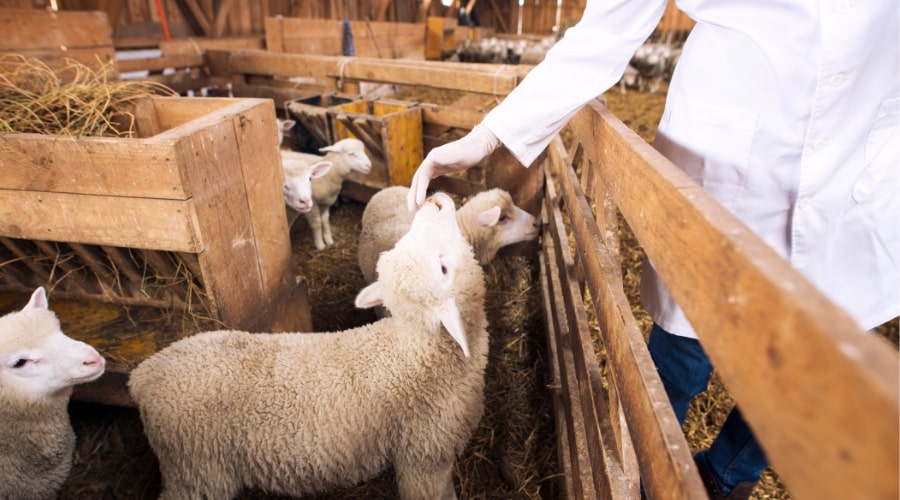When starting with sheep farming, your primary focus should be deciding whether to raise them for meat, milk, or wool. This choice determines the breeds you select, your setup, and your management strategies.
Raising Sheep for Meat
If you plan to raise sheep for meat, select breeds known for their growth rates and carcass quality. Breeds like Suffolk, Dorper, and Hampshire are excellent choices for meat production. These breeds grow quickly and produce tender, high-quality meat.
Ensure you have a good feeding plan to support their growth. Meat breeds require high-energy diets, particularly during finishing periods. Access to quality pasture combined with grain supplementation helps achieve desirable weight gain.
Market demand for lamb or mutton varies by region, so research local preferences before investing. Build relationships with buyers, including local butchers, restaurants, or farmers' markets, to ensure a steady demand for your product.
Raising Sheep for Milk
Sheep milk is highly nutritious and used for making specialty cheeses, yogurt, and other dairy products. Breeds like East Friesian and Lacaune are top choices for milk production. They produce higher quantities of milk compared to other breeds.
Invest in proper milking equipment and facilities. Hand-milking is feasible for small flocks, but larger operations benefit from automated systems. Cleanliness during milking is essential to maintain milk quality and prevent contamination.
Sheep require a high-quality diet to sustain milk production. Include protein-rich feed, vitamins, and minerals in their diet. Ensure lactating ewes have access to clean, fresh water, as hydration directly affects milk yield.
Raising Sheep for Wool
If you aim to produce wool, choose breeds known for their fleece quality. Merino, Romney, and Corriedale are popular wool-producing breeds. These breeds produce fleece that is valuable for making clothing, textiles, and other products.
Shearing is a crucial part of raising sheep for wool. Most wool breeds require shearing once or twice a year. Hire professional shearers or learn the skill yourself to maintain fleece quality and avoid harming the sheep.
Pay attention to fleece cleanliness. Keep pastures free of debris and provide clean bedding to prevent contamination. Proper nutrition also affects wool quality, so ensure your sheep receive a balanced diet.
Choosing the Right Breed
The breed you choose should match your production goals. Dual-purpose breeds, like Dorset and Polypay, offer flexibility if you want to produce more than one product. These breeds are suitable for both meat and milk or meat and wool production.
Consider your local climate and available resources when selecting a breed. Some breeds are more adaptable to specific conditions, such as extreme cold or arid environments. Research how well different breeds perform in your region to make an informed decision.
Setting Up Your Farm
The infrastructure you need depends on your production focus. For meat, provide spacious pastures and secure fencing to support growth. For milk, invest in a clean, dedicated milking area. For wool, prioritize shearing facilities and clean environments.
Regardless of your focus, ensure your sheep have access to shelter, fresh water, and a safe environment. Proper management of feeding, health, and breeding ensures consistent production and long-term success.
Checklist for Getting Started
- Decide on your production focus: meat, milk, or wool.
- Select breeds that align with your goals and local conditions.
- Provide suitable infrastructure, such as milking areas, shearing facilities, or spacious pastures.
- Develop a balanced feeding plan tailored to your production needs.
- Research market demand for your chosen product.
By tailoring your approach to your production goals, you can build a successful sheep farming operation. Focus on quality and proper management to meet market demands and ensure profitability.


